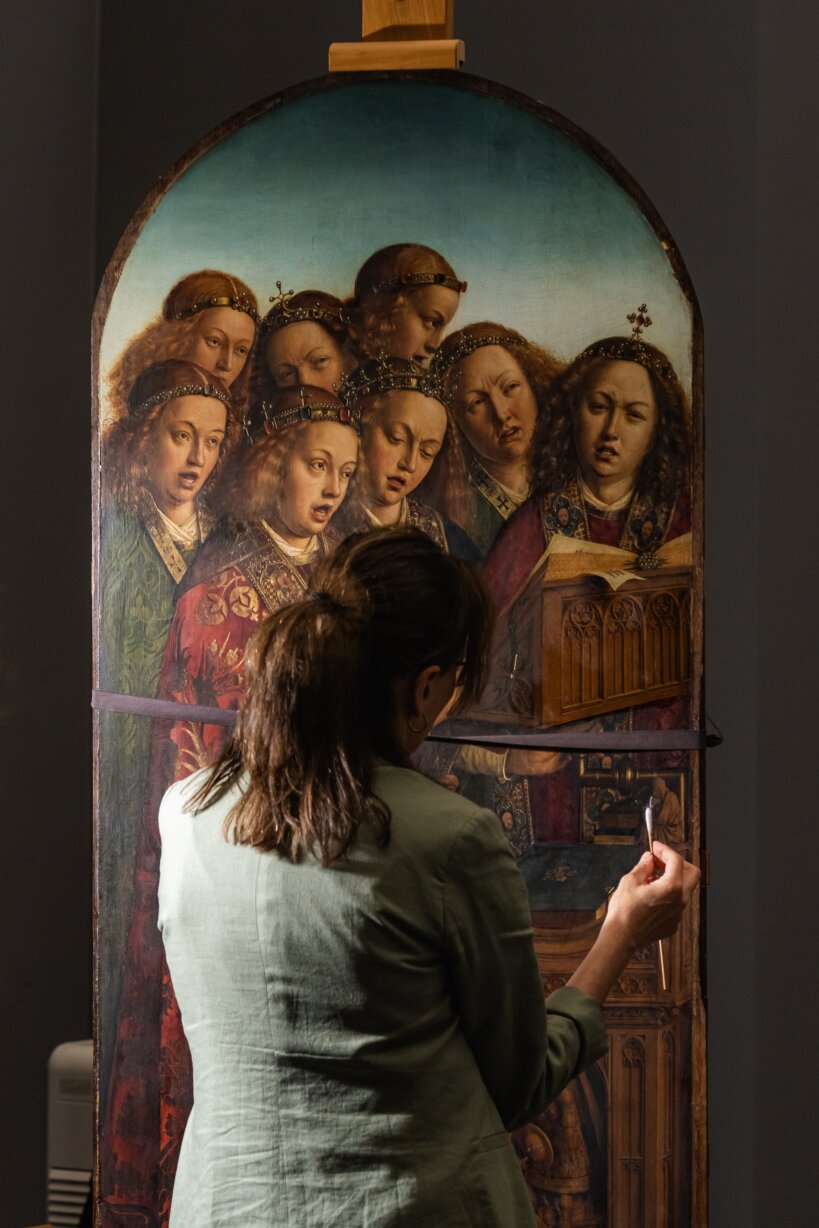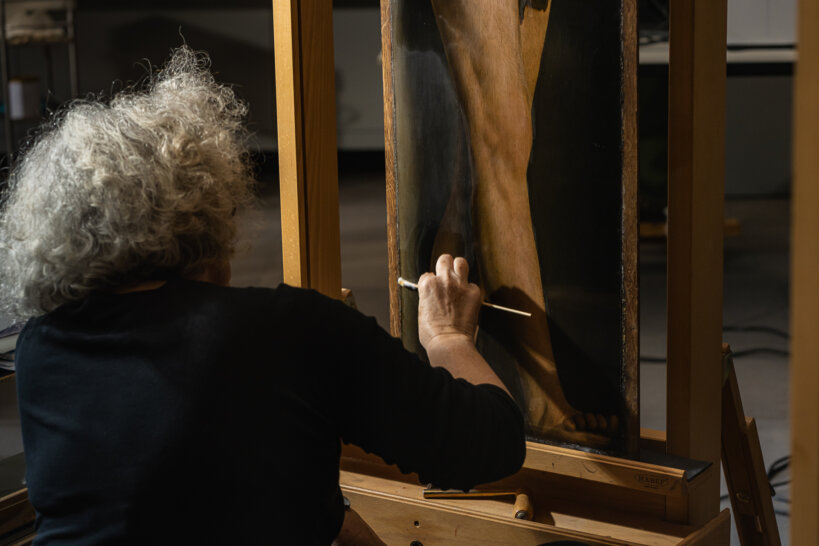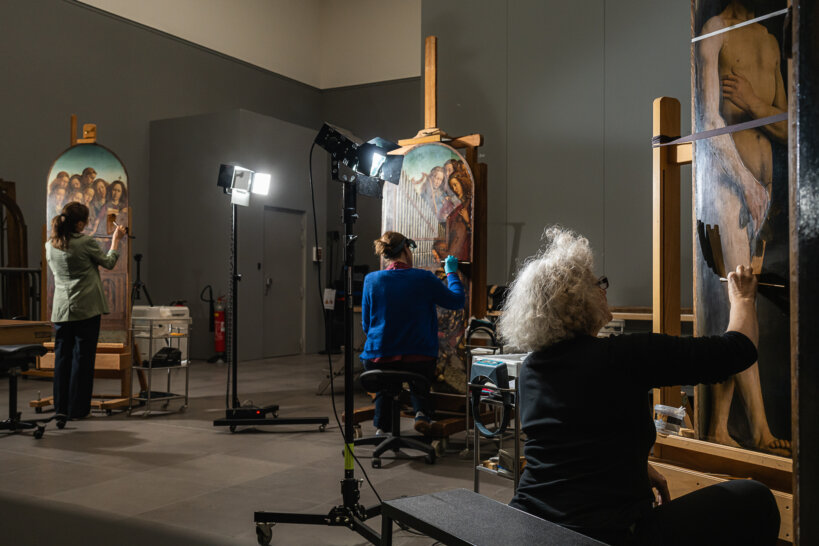From 2023, seven panels of The Adoration of the Mystic Lamb by the Van Eyck brothers (more commonly known as the Ghent Altarpiece) will be restored in the heart of the MSK. You could already follow the campaign from 2012 to 2019, and now the remaining panels are coming to the museum for the final restoration phase. During the week, you can see the restorers of the Royal Institute for Cultural Heritage (KIK) live at work, in the studio behind glass. During the weekend the panels are placed on a location visible to visitors.
Find out more details about the restoration via the Royal Institute for Cultural Heritage
1 / 1









